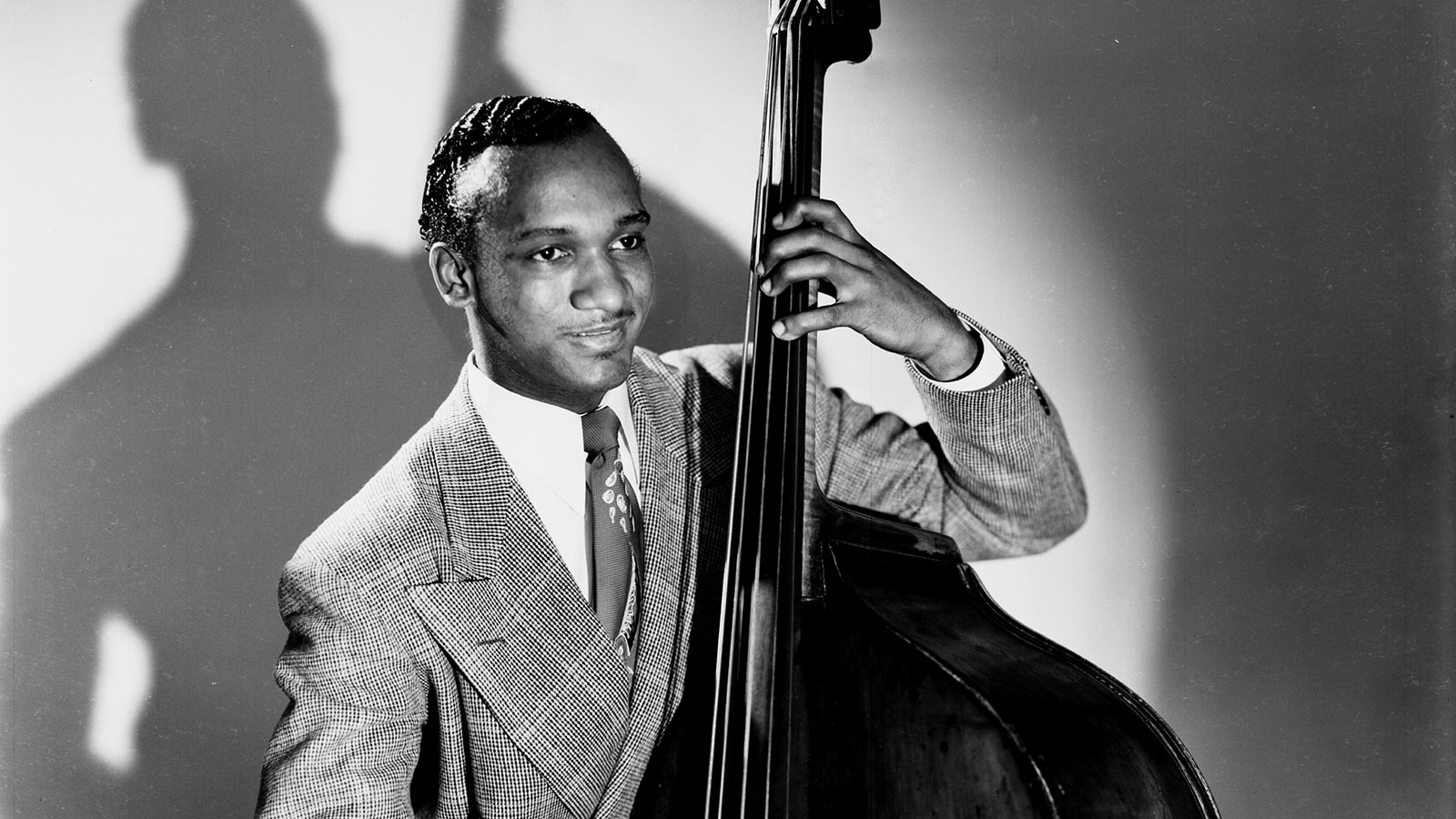5 albums you need to hear by bebop trailblazer Oscar Pettiford
A legend of upright bass who died far too young, Pettiford’s influence can still be heard across jazz and popular music. Here we revisit his finest moments on record

Oscar Pettiford was born in Okmulgee, Oklahoma on September 30, 1922. His Native American mother was Choctaw and his father Harry was half African-American and half Cherokee.
The family were all musically talented, and Pettiford began his career singing and dancing with them before switching to piano when he was 12. By the age of 14 he was tinkering with a double bass, and gained his first professional recognition as one of two bass players – the other being Chubby Jackson – in Charlie Barnet’s band.
Pettiford then went on to co-lead a very early bop group alongside Dizzy Gillespie, and was soon playing in Duke Ellington’s orchestra, where he remained for much of the latter years of the Forties.
He first added the cello to his repertoire as a joke, playing a solo on the instrument with the unsuspecting Woody Herman; later, after injuring his arm, he realized that he could use the cello as a stand-in for the bass even with his arm in a sling.
By the age 14 he was tinkering with a double bass, and gained his first professional recognition
Pettiford re-tuned the instrument to fourths, an octave higher than the bass, and played pizzicato rather than any bowed work, but it served him well as an additional timbral possibility from then on.
After Pettiford moved to Copenhagen, Denmark in 1958, he passed away from a polio-related illness in 1960, aged just 37. We salute him here.
Oscar Pettiford – Oscar Pettiford (1954)
Clocking in at a mere 16 minutes, Oscar Pettiford’s self-titled album nonetheless packs a punch that belies its blink-and-miss-it length.
Get The Pick Newsletter
All the latest guitar news, interviews, lessons, reviews, deals and more, direct to your inbox!
Also known as Oscar Pettiford Modern Quintet, the band showcased here included Ron Jefferson on drums, pianist Duke Jordan tickling the ivories, Charlie Rouse on tenor sax, and Julius Watkins on French horn.
Short this LP may be, but it is bebop at its best, capturing a tight and skilful band in full flow
There’s a leanness about the music that lends it urgency, with none of the pieces even reaching the three-minute mark. Pettiford and his gang offer up pure bebop, and the bassist, even in these fairly early days, displays fine sense of phrasing and space.
For the most part, these are original compositions by Pettiford, bolstered by Gerry Mulligan’s Sextette and The Golden Touch by a young Quincy Jones Jr. Pettiford brings out his cello on the latter, with Jordan’s piano following his lead.
Such is the forward-thinking nature of the album that Pettiford manages to appear twice on Rides Again, an ensemble piece with Rouse and Jordan taking solos: Here, Pettiford’s double bass is bolstered by an overdubbed cello line. Short this LP may be, but it is bebop at its best, capturing a tight and skilful band in full flow.
Lucky Thompson ft. Oscar Pettiford (1956)
Tenor saxophonist Lucky Thompson’s trio was completed by Skeeter Best on guitar, giving plenty of room for the players to soar to their hearts’ content, boosted by Hank Jones’ piano and Jim ‘Whatsmyname’ Cleveland’s trombone on side A.
The bassist is in his element, providing walking lines utilizing the whole of the neck
Thompson’s melodic jauntiness is best showcased during one of Pettiford’s classic compositions, Tricotism. The bassist is in his element, providing walking lines utilizing the whole of the neck, then letting loose with some very fast, beautifully clear eighth notes and triplets during a lengthy solo.
Here, Pettiford picks up the initial melody, develops it and adds some call and response phrases almost as a challenge to his bandmates. He then throws in some harmonic innovation as the phrases modulate through the keys, then brings it back to earth for Thompson to carry the song through to its denouement, where unison chromatics in the coda section are nothing short of gorgeous.
The somewhat underrated Thompson, Best, Cleveland and Pettiford released Volume II in 1957, this time with Osie Johnson sitting in on drums as the bop drove ever forward.
Oscar Pettiford and Jan Johansson – In Denmark 1959-60 (2016)
This mighty compilation highlights a period in jazz where things were changing fast. The year 1959 alone was an absolutely astonishing one for releases, including Miles Davis’ Kind Of Blue; and John Coltrane’s fittingly titled Giant Steps.
Two songs add Erik Moseholm is on bass. This frees Pettiford to move about on his pizzicato cello
Meanwhile, Pettiford’s European operations were set to soar on the wings of bebop, and the sessions collated here provide a fascinating, sometimes loose, always inventive, sense of the excitement fizzing around the jazz world as it entered its own Sixties.
Tenor sax virtuoso Stan ‘The Sound’ Getz pops up on three tracks to lovely effect, including Stuffy’ but it is the session recorded in February 1960 which is of most interest, as two of the songs add Erik Moseholm on bass. This frees Pettiford to move about on his pizzicato cello, particularly on his own Now See How You Are, complete with sumptuously humorous glissandos that bookmark the beginning and end of the song, and also on Sonny Boy.
Bass-wise, standouts include the walking line on There’ll Never Be Another You, where the instrument’s range is fully utilized.
Thelonious Monk – Plays Duke Ellington (1956)
Kenny Clarke made up the trio here, and the result is a seamless, richly-delivered set of Duke’s standards which swings hugely.
Monk’s inventive dissonance and resolution of melody demand sidemen of superior talent and superior chops
Pettiford and pianist Thelonious Monk mesh beautifully during It Don’t Mean A Thing (If It Ain’t Got That Swing), the bassist’s easy dialogue with the tune as well as Monk’s solo making clear from the outset that this is a next-level collaboration. The interpretations of the tracks allow for some tangential and more challenging soundscapes, evident on Sophisticated Lady, particularly the introduction.
Ultimately, this music is fully anchored by Pettiford and Clarke’s refined tightness. The pair’s mutual musical understanding is very evident on Caravan, the drummer on fabulous form and Pettiford fully and joyfully in the pocket.
Monk’s inventive dissonance and resolution of melody demand sidemen of superior talent and superior chops, and when he swirls off into a world of groove on Black And Tan Fantasy, the rhythm section doesn’t miss a beat. When you know where the beat is, it follows that you don’t necessarily have to play on that beat: Indeed, this is central to the irreverent genius of Monk.
Oscar Pettiford and His Jazz Groups – My Little Cello (1960)
Having moved to Copenhagen in 1958, the bassist benefited hugely from a fresh challenge, with a new scene and countless new musicians to work with.
As ever, Pettiford was buzzing with ideas and ready to explore and expand his new horizons, playing accordingly on sessions for European labels. It was not to last: These are the final recordings of the legend.
Pettiford soars and bops on his solos throughout, with Willow Weep For Me standing out
The sessions featured a host of young European talent, including Jan Johansson on piano, and the trumpet virtuoso Allan Botschinsky. Pettiford soars and bops on his solos throughout, with Willow Weep For Me standing out as a particular high point.
His sense of humor and drama shines through here, with Why Not? That’s What a direct response to his old collaborator and sparring partner Miles Davis, who had released So What on the seminal Kind Of Blue a year earlier.
It’s clear on My Little Cello that Pettiford was much renewed and refreshed by the prospect of working with a new generation as the Sixties opened up, making it all the more tragic when he passed away in September 1960. His influence is still being felt, in bebop and beyond.
Bass Player is the world’s most comprehensive, trusted and insightful bass publication for passionate bassists and active musicians of all ages. Whatever your ability, BP has the interviews, reviews and lessons that will make you a better bass player. We go behind the scenes with bass manufacturers, ask a stellar crew of bass players for their advice, and bring you insights into pretty much every style of bass playing that exists, from reggae to jazz to metal and beyond. The gear we review ranges from the affordable to the upmarket and we maximise the opportunity to evolve our playing with the best teachers on the planet.















